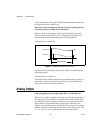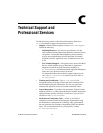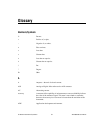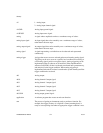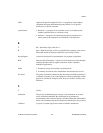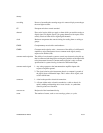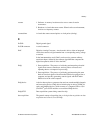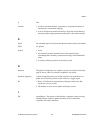Glossary
© National Instruments Corporation G-3 NI 6238/6239 User Manual
ASIC Application-specific integrated circuit—A proprietary semiconductor
component designed and manufactured to perform a set of specific
functions for a specific customer.
asynchronous 1. Hardware—A property of an event that occurs at an arbitrary time,
without synchronization to a reference clock.
2. Software—A property of a function that begins an operation and
returns prior to the completion or termination of the operation.
B
b Bit—One binary digit, either 0 or 1.
B Byte—Eight related bits of data, an eight-bit binary number. Also used to
denote the amount of memory required to store one byte of data.
block diagram A pictorial description or representation of a program or algorithm.
BNC Bayonet-Neill-Concelman—A type of coaxial connector used in situations
requiring shielded cable for signal connections and/or controlled
impedance applications.
buffer 1. Temporary storage for acquired or generated data.
2. A memory device that stores intermediate data between two devices.
bus, buses The group of electrical conductors that interconnect individual circuitry in
a computer. Typically, a bus is the expansion vehicle to which I/O or other
devices are connected. Examples of PC buses are the PCI, AT(ISA), and
EISA bus.
C
CCelsius.
calibration The process of determining the accuracy of an instrument. In a formal
sense, calibration establishes the relationship of an instrument’s
measurement to the value provided by a standard. When that relationship is
known, the instrument may then be adjusted (calibrated) for best accuracy.
calibrator A precise, traceable signal source used to calibrate instruments.





